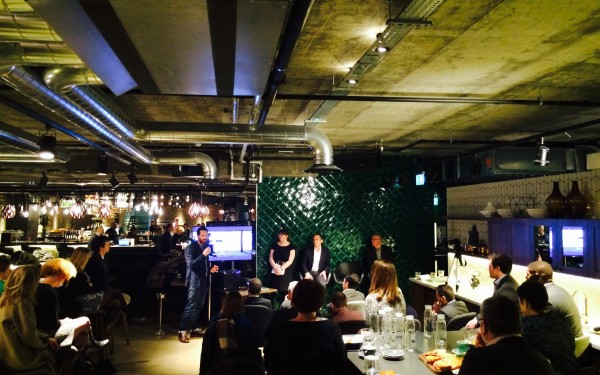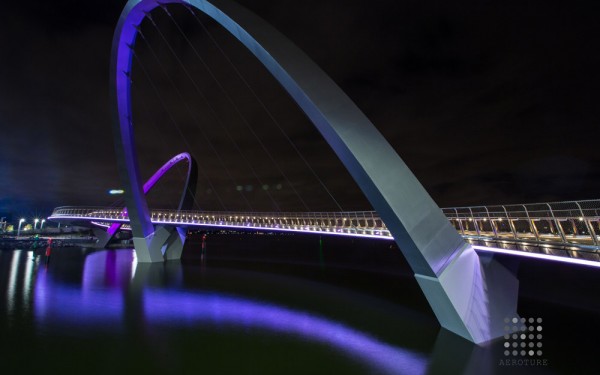Guest blog: Circadian system- blue light effects
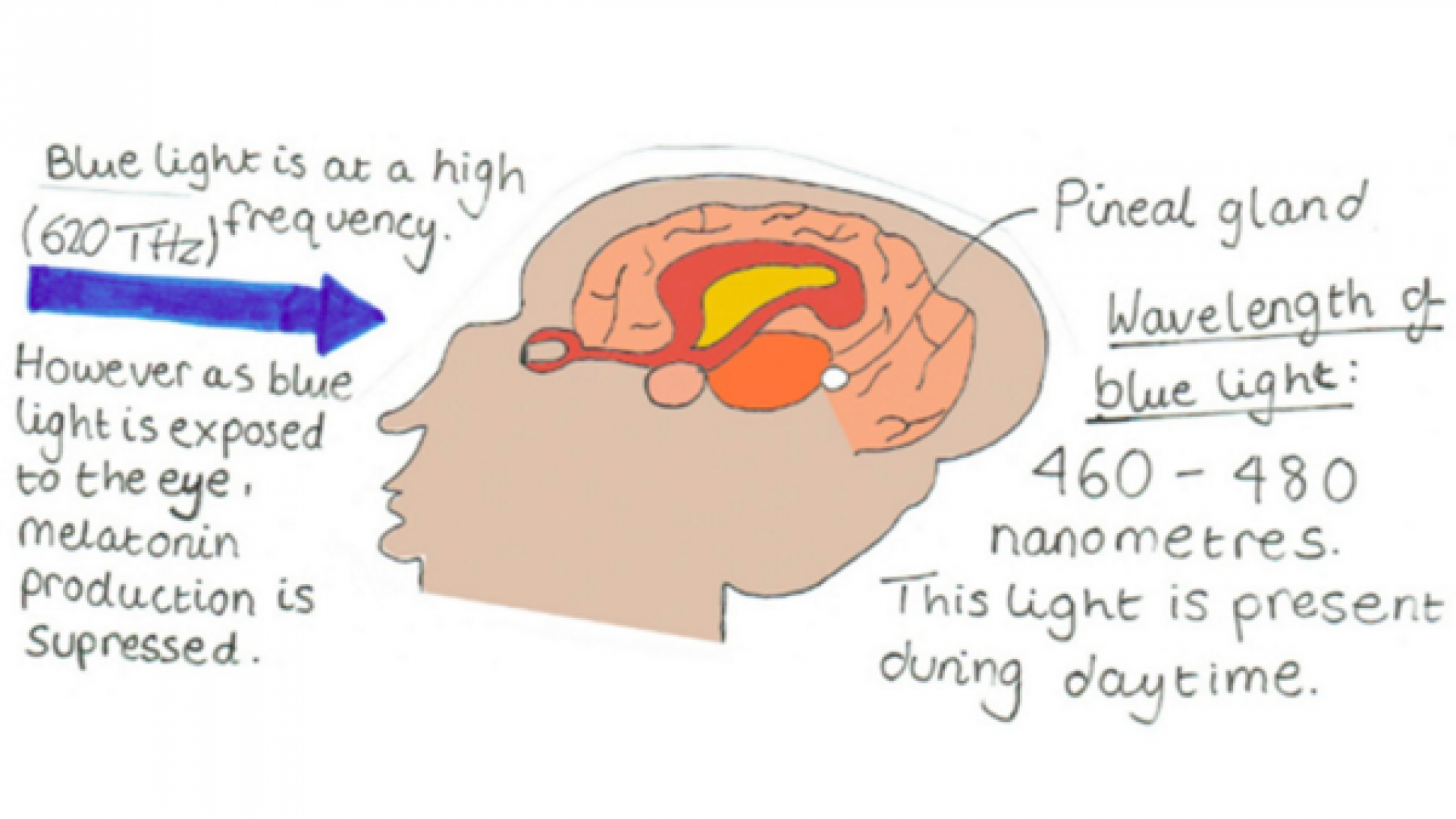
Posted on
February 18th 2016
Posted in
Studio News
My name is Seema Ahmed and I’m a student at Ark Academy Sixth Form in London studying A-level Biology, Product Design and Media. I have joined Electrolight (London) on a four day work experience placement. I have been asked to write a short paper on the effects of blue light on the circadian system. I’ve been studying how the side effects of blue light can link with lighting design.
Around 1981, scientists discovered that daylight (blue light spectrum) affects our tiredness and alertness. We are interested in the link between the effects of blue light on the human circadian system and what this might mean for lighting design.
It’s known that LED lights can be a very efficient light source and are considered to be ‘environmentally friendly’. What most people don’t know is the side effects it brings to mammalians like us.
Blue light is a high energy range of light that is visible to the naked eye and is very close to the UV part of the visible spectrum. LED lighting starts life as blue light which normally converts into white light. This is done by adding a phosphor disc placed above the blue light emission. The thickness of the phosphor layer affects the amount of blue light exposed as it could increase or decrease the colour temperature. The higher the colour temperature, the cooler the appearance of the light. Lower temperatures brings about a warm colour.
We are exposed to the blue light from LEDs through electronic devices such as iPads, phones and TVs. Blue light is also emitted from fluorescent light bulbs and the sun (a major source) which is scattered into the sky.
Blue light affects the human circadian system by boosting our mood and increasing alertness. This is because blue light suppresses the pineal gland from secreting melatonin, the hormone that makes us tired. Exposure to blue light during daytime suppresses the melatonin produced, however as the spectrum of light moves towards the warmer spectrum, less blue light is emitted.
The wavelength for blue light is around 460-480 nanometres:

Daylight condition: (Presence of blue light)
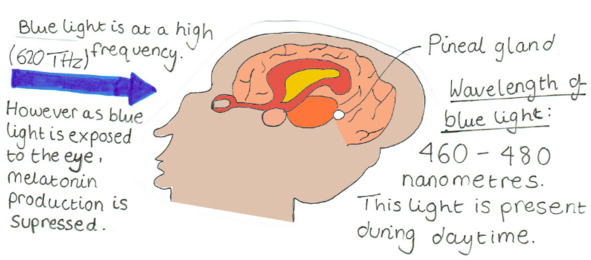
Night time condition: (Absence of blue light)
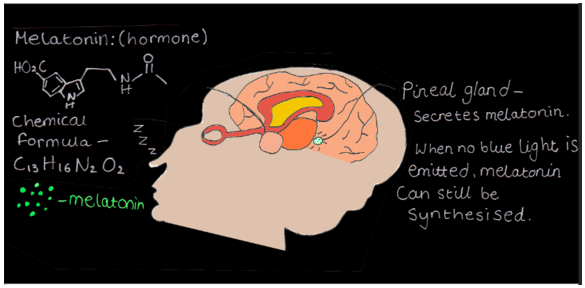
Environments, including hospitals may benefit from lighting with properties like LED as nurses and doctors with night shifts need to stay alert. However this may ignite conflict as patients may need sleep to recover from illnesses. Some sectors will not have this problem as patients may not be affected by the light e.g. during surgery the doctor needs to stay alert and because patient is under anesthetic they will not be affected by light emitted.
Blue lights power can damage the eye (retina) as it reaches as far as the macule. This can cause macular degeneration, resulting into vision loss. For an article going into more detail about this condition click here.
As blue light passes the eye it tends to defocus as it passes through the lens (in front of retina) . This results into the eye needing to constantly work to pull the light back into focus, leading to fatigue and eye strain. Other effects are the possible links to diabetes, obesity, depression and cancer (supported by Harvard studies).
F.lux is a program that reduces blue light exposure, it’s currently available on Microsoft, linux and iPhone. F.lux makes the screen of computers adapt to the time of the day- during daytime the screen light appears similar to bright sunlight and at night it changes to a warmer light. They request current location of user upon installation. F.lux calibrates the display screen of device based on the time of the day (sunrise and sunset at the chosen location).
To consolidate this study, there are identified side effects of blue light exposure and there are benefits on the human circadian system. These benefits include boost in alertness and mood whereas the side effects lead to lack of sleep. Blue light helps us keep awake during daytime as it’s regularly emitted from the sun. Companies such as Apple are working on reducing blue light emissions from technological devices at late hours. Although many companies are working on reducing blue light, some people are using it to their advantage as they require keeping awake during late hours. Links have been associated between lighting design and blue light as LEDs are largely used in the industry.
